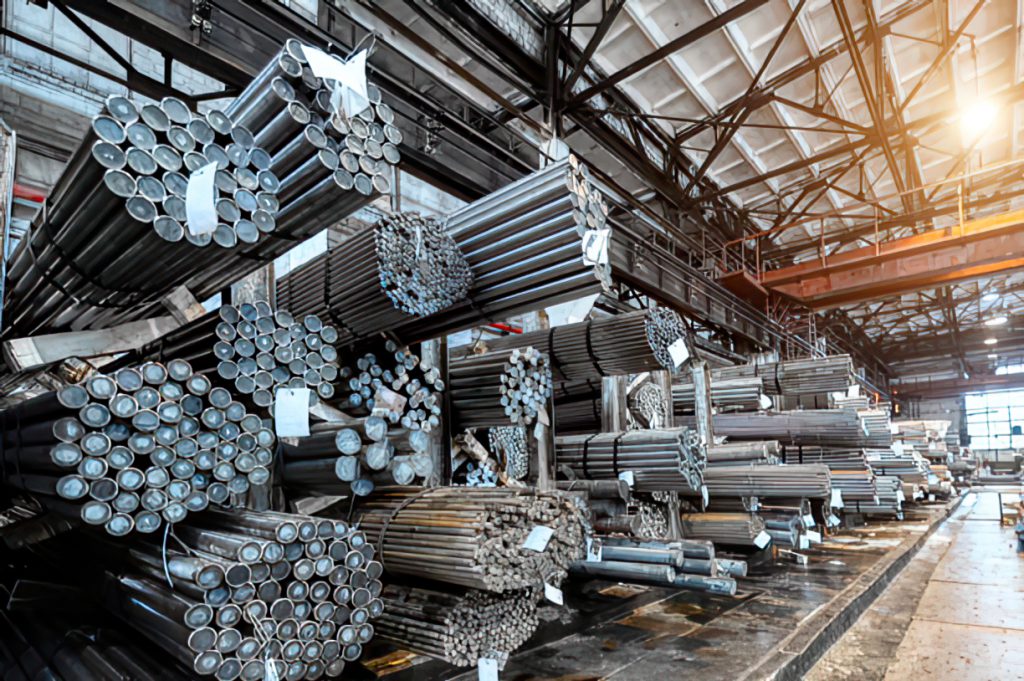Russia to re-orient metals and mining exports to Asian markets

By Eugene Gerden
Russia intends to re-orient the supplies of its metals and mining products to Asian markets instead of Western countries after sanctions imposed on the country by the US, Canada and the EU.
The European steel association, Eurofer, reported the EU imported 3.74 million tonnes of finished steel products from Russia in 2021; however, due to sanctions Russia will not be able to continue its supplies at least in the coming months. According to analysts’ calculations, Russia will need to re-orient about 4 million tonnes of steel products per year in the eastern direction.
In the case of steel products, the share of Asia-Pacific region overall sales’ structure of Russian enterprises has been only 8-10%; however, there is a possibility that it will increase up to 30% already this year. At the same time, the situation with coal is better with many Russian coal producers already having re-oriented their supplies on the Asian market in recent years.
As for the Asia-Pacific region, traditionally the biggest hopes of Russian producers are placed on China. The Chinese market is huge, accounting for more than 50% of the global consumption of many commodities as well as metals, including steel, nickel and copper. However, China has a strong domestic production, so imports account for only 25% of its consumption. According to analysts, this limits the possibility for Russian exporters and means that the level of competition with other suppliers will be tight.
The biggest problem for Russian metals’ exporters is, however, associated with the fact that spot prices for steel and many metals in the Chinese market  is significantly lower those in the EU and other Western markets. In this regard, the expected profits from Asia  will be lower those exported to the West.
Another problem is logistics, as, according to calculations of the Russian Steel Association, with a reorientation to the East, the distance of delivery for Russian metals’ producers will increase by more than three times from 2.300 km to 7.900 km. This will lead to additional expenses for companies of some 17 billion rubles per year.
In addition, that will be associated with the massive increase in freight costs that will grow by four times only in case of China’s seaports.
Still, most analysts believe given the current high prices, there is a lot of room for maneuver for Russian metal producers, as prices for steel products, ore and coal in the world market are still at historical highs without any signs of expected decline.
At the same time, prospects for increasing the supplies of Russian iron ore to Asia are better than steel products. At present, China imports this raw material in colossal volumes – more than 1.1 billion tonnes per year – and can easily take additional volumes from Russia.
Unlike aluminum, where Russia accounts for up to 20% of world exports, the EU’s dependence on Russian steel supplies is less; about 10-15% (3.2 million tonnes of imports in 2020).
Regarding Russian titanium, most analysts believe that the dependence of major Western aircraft producers still remains high despite the fact that Boeing has recently suspended further purchases while French Airbus is currently considering several options for its replacement. In 2021, Russia supplied about 27,000 tonnes of titanium to global market which is about 13% of world exports.
As for non-ferrous metals, at present their market stocks are at multi-year lows, while a high demand for them is supported by the global process of decarbonization of the global economy which stimulates the growth of consumption of non-ferrous and rare earth metals.
According to analysts, total stocks of aluminum on the world’s largest exchanges (LME, COMEX, Shanghai Future Exchange) are close to their lows since 2007, palladium stocks on the NYMEX are at their lows over the past two decades and a similar situation with copper.
Probably the biggest dependence of West from Russia in the case of non-ferrous metals is currently observed in case of palladium, supplies of which from Russia, so far, have accounted for about 40% of global exports of the metal. Moreover, in addition to its status as the world’s largest palladium producer, Russia also hosts the world’s largest reserves of the metal.
At the same time, Russia has the opportunity to re-orient Russian metal supplies to Asian markets, primarily to China, which has joined the decarbonization course and is limiting its own “dirty” production. In addition, China is now the only major economy that continues to expand fiscal stimulus, which is contrary to the policy implemented by the authorities of the EU and the U.S.
Meanwhile, amid the ongoing decline of exports, Russian authorities are launching a number of large-scale infrastructure projects in the domestic market with the aim to maintain domestic demand.
